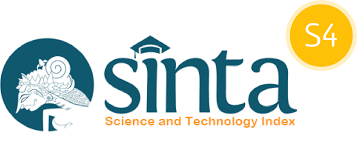Global Scientific Trends On Nutrition Apps to Support Healthy Lifestyle in Digital Age
Keywords:
Application, Health, Healthy Lifestyle, Health Technology, Personalization, Nutrition AppsAbstract
Technological developments have brought about significant changes in the way people manage their health and fitness, especially through nutrition apps. Bibliometric analysis is used in the article to help discover current trends in the use of nutrition apps that support a healthy lifestyle. Key focuses of this trend include personalization, easy access to nutritional information, and integration with other health devices. In addition, this article also explores the positive impact of using nutrition apps on users' health awareness and behavior, as well as the challenges faced, such as data privacy issues and the need for scientific validation of the recommendations provided. The Scopus database was used to search for article data. Search results on the Scopus database found 107 documents. The development of publication of articles regarding nutritional applications to support a healthy lifestyle can be said to be quite increasing every year, although in 2023, 2019 and 2017 there has been a decline. There are a total of 175 countries that have contributed to publications regarding the use of nutrition applications to support a healthy lifestyle. Through this analysis, it is hoped that it can provide insight into the important role of nutritional applications in supporting a healthy lifestyle in the digital era
References
Al Husaeni, D. F., & Nandiyanto, A. B. D. (2022). Bibliometric using Vosviewer with Publish or Perish (using google scholar data): From step-by-step processing for users to the practical examples in the analysis of digital learning articles in pre and post Covid-19 pandemic. ASEAN Journal of Science and Engineering, 2(1), 19-46.
Al-Busafi, M., Zayed, K., & Waly, M. (2018). Anthropometric Attributes and Dietary Practices of School aged Adolescents in Different Governorates of Oman. The Swedish Journal of Scientific Research, 5(1), 1-6.
Amirli, F. A., Aghamaliyev, Z. Z., Abdullayeva, I. G., Pashayeva, Z. N., & Aghamaliyeva, D. B. (2024). THE ROLE OF NUTRITION IN ENSURING HEALTHY LIVING. PROCEEDINGS OF AZERBAIJAN HIGH TECHNICAL EDUCATIONAL INSTITUTIONS, 2(148), 629-638.
Banaschewski, T., Konrad, K., Rothenberger, A., & Hebebrand, J. (2009). Forschungsbericht: Aufmerksamkeitsdefizit/-Hyperaktivitätsstörung. Zeitschrift für Kinder-und Jugendpsychiatrie und Psychotherapie, 37, 250-265.
Behrisch, M., Blumenschein, M., Kim, N. W., Shao, L., El‐Assady, M., Fuchs, J., ... & Keim, D. A. (2018). Quality metrics for information visualization. In Computer Graphics Forum (Vol. 37, No. 3, pp. 625-662).
Carter, M. C., Burley, V. J., Nykjaer, C., & Cade, J. E. (2013). Adherence to a smartphone application for weight loss compared to website and paper diary: pilot randomized controlled trial. Journal of medical Internet research, 15(4), e32.
Chen, J., Gemming, L., Hanning, R., & Allman-Farinelli, M. (2018). Smartphone apps and the nutrition care process: current perspectives and future considerations. Patient Education and Counseling, 101(4), 750-757.
Chew, H. S. J., Ang, W. H. D., & Lau, Y. (2021). The potential of artificial intelligence in enhancing adult weight loss: a scoping review. Public health nutrition, 24(8), 1993-2020.
Chung, Y. L., & Rhie, Y. J. (2021). Severe obesity in children and adolescents: metabolic effects, assessment, and treatment. Journal of obesity & metabolic syndrome, 30(4), 326.
Claessens, M., Van Baak, M. A., Monsheimer, S., & Saris, W. H. M. (2009). The effect of a low-fat, high-protein or high-carbohydrate ad libitum diet on weight loss maintenance and metabolic risk factors. International journal of obesity, 33(3), 296-304.
Demšar, U., & Virrantaus, K. (2010). Space–time density of trajectories: exploring spatio-temporal patterns in movement data. International Journal of Geographical Information Science, 24(10), 1527-1542.
DiFilippo, K. N., Huang, W. H., Andrade, J. E., & Chapman-Novakofski, K. M. (2015). The use of mobile apps to improve nutrition outcomes: a systematic literature review. Journal of telemedicine and telecare, 21(5), 243-253.
Elavsky, S., Smahel, D., & Machackova, H. (2017). Who are mobile app users from healthy lifestyle websites? Analysis of patterns of app use and user characteristics. Translational behavioral medicine, 7(4), 891-901.
Flanagan, E. W., Beyl, R. A., Fearnbach, S. N., Altazan, A. D., Martin, C. K., & Redman, L. M. (2021). The impact of COVID‐19 stay‐at‐home orders on health behaviors in adults. Obesity, 29(2), 438-445.
Huckvale, K., Morrison, C., Ouyang, J., Ghaghda, A., & Car, J. (2015). The evolution of mobile apps for asthma: an updated systematic assessment of content and tools. BMC medicine, 13, 1-15.
Krebs, P., & Duncan, D. T. (2015). Health app use among US mobile phone owners: a national survey. JMIR mHealth and uHealth, 3(4), e4924.
Krebs, P., & Duncan, D. T. (2015). Health app use among US mobile phone owners: a national survey. JMIR mHealth and uHealth, 3(4), e4924.
Laing, B. Y., Mangione, C. M., Tseng, C. H., Leng, M., Vaisberg, E., Mahida, M., ... & Bell, D. S. (2014). Effectiveness of a smartphone application for weight loss compared with usual care in overweight primary care patients: a randomized, controlled trial. Annals of internal medicine, 161(10_Supplement), S5-S12.
Lewis, S., Thomas, S. L., Hyde, J., Castle, D. J., & Komesaroff, P. A. (2011). A qualitative investigation of obese men's experiences with their weight. American journal of health behavior, 35(4), 458-469.
Li, Y., Schoufour, J., Wang, D. D., Dhana, K., Pan, A., Liu, X., ... & Hu, F. B. (2020). Healthy lifestyle and life expectancy free of cancer, cardiovascular disease, and type 2 diabetes: prospective cohort study. bmj, 368.
Macovei, S., Tufan, A. A., & Vulpe, B. I. (2014). Theoretical approaches to building a healthy lifestyle through the practice of physical activities. Procedia-Social and Behavioral Sciences, 117, 86-91.
Mamurov, B., Mamanazarov, A., Abdullaev, K., Davronov, I., Davronov, N., & Kobiljonov, K. (2020, March). Acmeological approach to the formation of healthy lifestyle among university students. In III international scientific congress society of ambient intelligence 2020 (ISC-SAI 2020) (pp. 347-353). Atlantis Press.
Mumcu, H. E. (2021). Fitness-related on health mobile applications during COVID-19: case of Turkey. Prog Nutr, 23, e2021173.
Paradis, S., Roussel, J., Bosson, J. L., & Kern, J. B. (2022). Use of smartphone health apps among patients aged 18 to 69 years in primary care: population-based cross-sectional survey. JMIR Formative Research, 6(6), e34882.
Pendergast, F. J., Ridgers, N. D., Worsley, A., & McNaughton, S. A. (2017). Evaluation of a smartphone food diary application using objectively measured energy expenditure. International Journal of Behavioral Nutrition and Physical Activity, 14, 1-10.
Tonkin, E., Brimblecombe, J., & Wycherley, T. P. (2017). Characteristics of smartphone applications for nutrition improvement in community settings: a scoping review. Advances in nutrition, 8(2), 308-322.
West, J. H., Belvedere, L. M., Andreasen, R., Frandsen, C., Hall, P. C., & Crookston, B. T. (2017). Controlling your “app” etite: how diet and nutrition-related mobile apps lead to behavior change. JMIR mHealth and uHealth, 5(7), e7410.
Yang, Y. J. (2019). An overview of current physical activity recommendations in primary care. Korean journal of family medicine, 40(3), 135.
Yang, Y., Wu, M., & Cui, L. (2012). Integration of three visualization methods based on co-word analysis. Scientometrics, 90(2), 659-673

















